Is February really the month of love? If you’re single (and optimistic), you may wander quaint side streets, watching couples through foggy windows in tiny cafes. Or you may hope against hope that a gooey-faced cherub will shoot a delicate arrow into the heart of that personal trainer with the paper-white teeth and the bulge that hovers over your face when you’re doing the bench press.
If your optimism has gone the way of mix-tapes, February is the month of hopelessly sobbing into a pint of Sharon’s Mango Sorbet during a Buffy marathon. Sometimes it’s the month of grumbling about your married friends whose sweet nothings posted to each other on Facebook make you want to repeatedly stab a stuffed puppy in the face.
Or maybe, if your optimism and pessimism have met in an unfortunate chemical reaction, February is the month when you dream of something psychotically empowering – something which turns you from victim to culprit. Like making a gift of a beating heart in a box of candy, boiling your ex-lover’s bunny, or tying your old flame to a chair before you drill a hole in his forehead.
Wait? You’ve never had those fantasies? It’s ok. Really. These film-makers have had them for you.
February in My Year of Horror is the month of love gone bad, like that tub of sour cream in the back of your fridge: so dreadful it’s certain to look like the flesh in a David Cronenberg movie.
Speaking of Cronenberg, the month of rotten love brings us Shivers and The Brood, early, crazy Cronenberg where medical science brings loony plagues on humankind. (The Brood stars the beautiful and excellent Samantha Eggar, accidentally featured in another film this month, a sort of precursor to Silence of the Lambs called The Collector.)
Burn your old Valentines and keep your pets close. This month is for stalkers, necrophiliacs and passions gone berserk.
We start with Fatal Attraction, the beau ideal for stalker flicks. Then back down to a much lower bar before climbing back up to my favorite film of the month.
~~~
Fatal Attraction (1987) – One of the highest grossing films of 1987 was decried by feminists for its portrayal of a career woman as psychotic while letting its cheating husband off the hook. The controversy contributed to the hype but Fatal Attractive was supported by a strong cast, fine direction, solid screenplay and excellent reviews. There had been stalker films before, such as 1945’s obsessive love noir, Leave Her to Heaven and the original Cape Fear (1962), but it was Adrian Lyne’s superb take on James Dearden’s screenplay which made the “stalker” film a Hollywood staple well into the 21st Century.
Excellent films like Misery (1990) were followed by decent imitators like Single White Female (1992) and The Hand That Rocks the Cradle (1992). But as the genre began to play itself out, lesser films took over: Fear (1996), The Fan (1996 – the one with Robert DeNiro & Wesley Snipes, not the identically titled, unrelated stalker film from 1982 with Michael Biehn and Lauren Bacall), One Hour Photo (2002), Swimfan (2002), and Obsessed from 2009 with Beyonce, Idris Elba and Alli Larter. The very interesting Notes on a Scandal (2006) with Dame Judi Dench and Cate Blanchett is an exception in this string of middling films. Most of these films, like Fatal Attractions, teeter on the edge of horror but I’ll give Fatal Attraction a parachute into February because of its influence on the genre, that bloody finale and that boiled bunny.
When Dan Gallagher strays from his marriage vows (Michael Douglas) to spend a weekend with sexy colleague, Alex Forrest (Glenn Close), he thinks it’s just going to be wham-bam-thank-you-ma’am. Soon, though, Alex is cutting her own wrists, pouring acid on his car, and stewing the Gallagher family pet. You can take it from there.
Glenn Close gives one of her two best, leading performances: the other being the Marquise de Merteuil in the similarly titled Dangerous Liaisons. (The title of that film predates Fatal Attraction by more than 200 years in Choderlos de Laclos’ seminal, 1782 novel, Les Liaisons Dangereuses.) Though I prefer the restraint of her performance as the Marquise, Close’s Alex is one to beat when it comes to psychotic villainesses. If you’ve seen it before, you should see it again if only to watch Ms. Close maniacally chewing up every piece of scenery she can find. It’s a powerhouse performance, kept in check by Lyne’s steady hand.
Director Lyne and cinematographer Howard Atherton give the film a moody, misty glow and Lyne treats the script as a drama. But Fatal Attraction strays beyond its dramatic confines, introducing elements that make even the most morally upright citizens uneasy by implying that each of us has been either a Dan Gallagher or an Alex Forrest. We are only one wrong choice away from either.
SHOULD I SEE IT? I find that idea attractive.
~ ~ ~
He Knows You’re Alone (1980) – is an arrhythmia in this month’s flurry of heart problems. It’s one of those labored 80’s slasher flicks which populated the decade after Halloween. This one blatantly rips off its predecessor’s choice gestures: the soundtrack and the silent, distant appearances of the killer who, in this movie, is called by the less-than-alarming name of Ray Carlton. I know lots of other movie murderers have mundane names; Norman Bates, Michael Meyers and Jason Voorhees aren’t particularly fantastic but these are serial killers we remember. Because of what they represent, their names have taken on mythological weight. But Ray Carlton? Just doesn’t cut it.
Maybe the lousy name is why his girlfriend dumped him to marry Detective Len Gamble (Lewis Arlt) with his 70’s, porn-star smolder. Or maybe she dumped him because he was completely bat-poop crazy. Whatever the reason, Carlton didn’t take it well, leaving Gamble with a vendetta and a dead bride. As the movie opens, Carlton is on a killing spree, pursuing his favorite victims: brides-to-be. Apparently, in addition to knowing they’re alone, he knows their wedding dates.
Our heroine, Caitlin, amiably played by Amy Jensen, is anticipating her wedding with more than a little trepidation and is simultaneously pursued by her would-be-adorable ex, Marvin (Don Scardino), who wants to rekindle their romance. When her friends start turning up dead, things get all horror movie, with people getting killed and stuff.
The screenplay by Scott Parker makes some attempt at developing Marvin, Amy, and her bridesmaids, Nancy, Joyce and Diane but killer (cue lots and lots of loud scary music) RAY CARLTON’s motivation is so patently false and the direction so lackluster it is hard to get involved in what should be the film’s suspenseful climax (which takes place at the morgue where Marvin works.) After Carlton murders all of Amy’s friends, she seems remarkably calm but I will say this: it’s the first time a heroine is actually able to find the keys and start the car when she tries to get away. This is convenient since Carlton is able to hitch a ride on the roof and send Amy’s car straight into a tree, injuring neither of them very severely. By the time Amy gets to the morgue where Marvin works, she seems calm enough to walk down the stairs adjusting her clothes. (This is the kind of movie where a victim goes to the bathroom to brush her hair and fix her clothes before settling down in the stall for a pee. I don’t know about you, but I usually fix my clothes after I use the toilet.)
Carlton seems happy to pick up whatever sharp object is nearby in order to kill but is strangely in possession of a Renaissance stiletto at the beginning of the film, which he uses to impale a victim through the back of a cinema chair. Played by an actor named Tom Rolfing who died in 1990, Carlton has a crazed gleam in the eye – a detail in Rolfing’s performance which may be an attempt to keep the silent role interesting. Rolfing almost manages it.
This movie is only notable for the appearance of Tom Hanks as a jogger with a romantic streak and reliable character actors Paul Gleason (you’ll remember him as the teacher in The Breakfast Club) and James Rebhorn (in a rare, shirtless role.)
SHOULD I SEE IT? Do you take this bride? I don’t.
~~~
The Loved Ones (2012) – When it comes to torture porn, there are very few films I actually like. With that caveat in place, The Loved Ones is an oddity in this genre, giving the audience a hero to care about while developing the characters in his life. It’s also a macabre blend of comedy and cruelty which feels a bit like Strictly Ballroom meets Hostel.
Brent, an Aussie high-schooler, has lost his father in a terrible car accident. We meet Brent some time after this tragedy when he is asked to the high school dance by the pretty but painfully shy Lola whom we later find is not quite as shy as she seems. Brent, suffering guilt over his father’s death, has a strained relationship with his mother but an ongoing one with the drugs he gets from Jamie at school. Brent also has a girlfriend who seems genuinely to love him – in the way a teenager can. Given the ordeal Brent has suffered, it feels more than a little cruel and a lot sadistic to put him through what the film asks him to endure. He is abducted by Lola’s father and the two, father and daughter, spend an evening torturing him in various ways that involve chemical injections (window cleaner?), drills, forks, knives and boiling hot water. It’s not entertaining for anyone but Lola who, it seems, has done this since childhood. “Daddy,” whose lecherous gaze hints at something more than paternity, does whatever “Princess” wants.

Window cleaner for one of THE LOVED ONES. With Anne Scott-Pendlebury, Xavier Samuel, John Brumpton, Robin McLeavy.
The tropes of this horror sub-genre, sprays of blood, open flesh wounds, and sadism, belie a genuine sense of pathos in The Loved Ones which is absent from, say, Hostel III or Eden Lake. This film drags its hero through a grotesque ordeal and several attempts at escape while his mother and girlfriend fret over his whereabouts. There is, strangely enough, a respite from the torture in a sweet subplot involving Brent’s drug-sharing friend, Jamie, and his night at the dance with the beautiful but emotionally wrecked Holly, whose brother has mysteriously disappeared. Jamie isn’t what you’d expect of a drug dealer – he’s awkward and pudgy, thrilled that the leggy Holly has said yes to his request. Jamie is the opposite of Lola who has taken her need for “loved ones” to an extreme, simultaneously anticipating rejection while attempting to make zombies of them through some questionable (and unbelievable) science experiments.
Decent in all technical areas – script, direction, cinematography and acting – the movie has a unique perspective, looking askew at the horror with rose-tinted glasses (like the prom dress Lola wears.) Director/writer Sean Byrne has some heart and isn’t overtly cruel to the audience but I can’t help wondering why this kind of film exists. It’s ugly to watch but ultimately has some kind of redemption in it. If you’re going to watch torture porn, I suppose it is better to watch torture porn with heart than with its heart removed. Though I daresay gore lovers prefer the latter.
SHOULD I SEE IT? Didn’t love it.
~~~
Ruby (1977) – Piper Laurie, known by horror fans for her demented, iconic performance in Carrie one year earlier, drives this film as if its destined for the classics. Unfortunately, she hits a roadblock at every turn of the plot.
It goes like this: sixteen years earlier, in 1932, Ruby witnessed the murder of her gangster-lover, Nicky, at the hands of his very own gang. She bears the burden of her grief in Nicky’s mute 16-year-old daughter, Leslie, born to Ruby on the night of his death. Now that she runs a drive-in, Ruby’s been able to give jobs to the hard-up members of her former gang. As she drinks herself into a nightly stupor, the former gangsters take tickets, run the soda fountain, provide comic relief and otherwise spend the movie getting rubbed out one-by-one by a supernatural force. As if that weren’t enough, Ruby must endure the weird and possibly possessed behavior of her daughter. No doubt Ruby would rather be reliving the past or tormenting the silent, wheelchair-bound mafia don, Jake – the one without an eyeball in his head – who Ruby keeps him around for yuks. What happened to Jake’s eyes, his involvement in Nicky’s death, the source of Leslie’s demonic side-show, and the reason a bunch of gangsters are working at a drive-in keep the movie blissfully free of tension or suspense but ripe for comedy.
A lazy sax, a noir atmosphere and Laurie’s performance almost elevate this movie to camp heaven. Laurie, aging glamorously, gets to luxuriate in bias-cut dresses, furs and feather boas as her friends die all around her but those bizarre, nearly bloodless murders never manage to resuscitate the drowning script. Once Leslie starts acting all Linda Blair, the movie has gone delightfully off its nut (as if the idea of a gun moll running a drive-in isn’t hilarious enough.) The whole exercise is strangely compelling. If you’re a Piper Laurie fan, don’t feel sorry she’s in this turkey; Laurie plays it like Shakespeare and seems to be having the time of her life.
SHOULD I SEE IT? If you take pleasure in watching a great actress overcome the incredible adversity of a lunatic screenplay.
~~~
The Collector (1965) – Director William Wyler had been working successfully for 3 decades when he turned to this engaging suspenser, turning down The Sound of Music to do it. Who’s to say how the director of Ben-Hur, Roman Holiday, and The Best Years of Our Lives would have handled the Rodgers & Hammerstein classic but his work on the film adaptation of John Fowles’ novel was something new for the accomplished veteran.
Terrence Stamp and Samantha Eggar play Freddie Clegg and Miranda Gray, abductor and victim, in a 2-character psychological thriller with overtones of Psycho and Silence of the Lambs. Clegg is a butterfly collector – a lonely hobbyist who must kill what he loves in order to keep it. Having won a fortune in a lottery, Clegg acquires an old house in the English countryside, with a basement perfect for hiding his prey: the lovely Miranda. Clegg doesn’t want to harm her – or so he tells himself – he only wants her to love him. Once he abducts her, the film is a battle for her freedom.
We’ve seen this kind of film before and, like Fatal Attraction, it’s not horror though many horrible things happen – mostly by implication. I’m cheating a little by including it in this list: I found it interesting as a precursor to Silence of the Lambs – with its creepy basement cell and psychologically unbalanced anti-hero. Clegg’s madness is slowly decanted and Stamp allows us infrequent sips. His delivery of the screenplay’s best line, “They’re looking for you alright but nobody’s looking for me,” is chilling. When angry, Clegg slips from a measured, middle-class British into guttural cockney – oh so subtly – but Stamp’s choice makes its point. Eggar, whose beauty makes us believe in Clegg’s obsession, throws herself into the role with utter conviction. She is no hapless victim, but a product of the feminist movement of the 60’s: a woman of spirit, talent and ambition who uses her wits at every turn, though she never quite manages to overcome Clegg’s paranoia.
There isn’t much action in the film – a few bouts of violence which are far too tame for the modern sensibility – but the screenplay is solid, and the performances build on it. Wyler, one of my favorite directors, is not necessarily at his best stylistically – there’s far too much underscoring and the film has a kind of lackluster, 60’s drabness – but his handling of the actors turns the movie from a dramatic exercise into a haunting portrait of madness.
SHOULD I SEE IT? For Terrance Stamp and Samantha Eggar.
~~~
Shivers (1975) & The Brood (1979) – David Cronenberg’s fixation on human transformation through the terrors of science have given him a genre all his own: body horror. If you don’t know by now what you’re getting into when you switch on a David Cronenberg film, let this be a warning. It’s a special blend of intellectual themes and grotesquerie.
In Shivers, his first full-length feature, science, sex and infection – Cronenberg’s favorite ingredients – are blended in a peculiar potion that goes from silly to sick and back again more than once in its 90-minute running time. Taking place over the course of one night, the residents of an isolated, luxury apartment complex are rapidly infected by a parasite which turns them into hyper-horny, id-zombies whose only goal seems to be to infect other people – except when it’s to have sex with each other. Shivers is a collage of scenes involving the building’s residents: an on-site doctor and the nurse who is his wife, an insurance executive who becomes “patient zero” with squirming parasites crawling out of his gullet every few minutes, the executive’s wife, and her confidante – a bohemian artist played by Barbara Steele. (Steele is one of the original “scream queens,” made famous by Italian horror-master Mario Bava in Black Sunday.)
The incubation time for these parasites is never explained and seemingly random. As the film opens, the executive has been infected for some time but over the course of less than 12 hours, the building’s entire population is turned into a menagerie of sex-fiends. Apparently, you acquire the parasite through your esophagus unless one of the slugs decides to swim from the bathtub drain into your vagina. You may be instantly affected – except when it takes time to get you revved up, like with Viagra. The squirming, squishy buggers are able to fly at will but sometimes enjoy a slow crawl up the body, leaving an acidic 2nd degree burn. (Why?) Some of the infected turn into aphasic, sex maniacs while others decide instead to seduce their victims with finesse and a glass of wine. How exactly does this parasite work?
The movie is a cautionary, pre-AIDS fable about the evils of modern science and plays like the AIDS crisis inside out, with victims growing more powerful after their infections. In hindsight, this film’s release at the height of the sexual revolution makes Cronenberg a Nostradamus of sorts but that can’t make up for its dopiness. As the work of a young filmmaker, its ideas are fascinating. His themes are at least bizarre enough to keep you interested – even when the movie makes you giggle instead of scream.Cronenberg got better over time.Silly as it is, who wouldn’t want to see a movie originally filmed under the title Orgy of the Blood Parasites?
The Brood has the more mature Cronenberg again putting science and passion under his lens. It traces themes similar to last month’s Possession but where that film was like a nightmarish painting, The Brood tells a clear, simple plot born of a surreal seed.
Frank Carveth (Art Hindle) fights for custody of his 5-year-old daughter when he begins to suspect that his ex-wife, Nola (Ms. Eggar) has abused her. Nola, currently working through past trauma via the experimental psychotherapy treatment known as psychoplasmics, is living under the observation and care of Dr. Hal Raglan (Oliver Reed), whose methods are called into question. It seems Dr. Raglan encourages his patients to let go of suppressed emotions – normal enough for a psychotherapist except that their feelings manifest in physiological changes. As Frank fights for the custody of young Candice (exceptionally played by the child actor Cindy Hinds), relatives and friends around him are murdered, mostly by bludgeoning, at the hands of some freakish children.
Given the outlandish situations in Cronenberg’s oeuvre, many of his films are peppered with howlers – inadvertently funny dialogue for which a keen sense of irony or willing suspension of disbelief are requirements. The Brood avoids those traps, with well-drawn characters, simple rules and a fascinating, thematic playground for its game.
Ms. Eggar, lovely and sympathetic in The Collector, is all madness, rage and vulnerability in The Brood and basically steals the show though she is well-supported by her costars. The steadfast Oliver Reed brings pathos to a character whose narcissism leads directly to the film’s conflict and Art Hindle is a likeable enough hero. But it is Cindy Hinds as young Candice who allows The Brood to play on our sympathy, asking us to look back at the demons of our own childhoods.
In spite of the grand camp of its central premise, The Brood poses some grown-up theories, suggesting that responsibility for our own feelings and responsibility for the pain we inflict are not mutually exclusive. The sins of the parent revisit the child, creating a cycle of pain that must be broken. By clinging to the emotional traumas of the past, we hurt not only ourselves but everyone around us. The Brood is about selfishness, self-delusion and, ultimately, forgiveness. But then there’s that birth scene where Eggar chews up the scenery along with her placenta… pure Cronenberg.
SHOULD I SEE IT? THEM? AT LEAST ONE? If you know what to expect from Cronenberg, Shivers is a fascinating precursor to his later works. The Brood is the better of the two.
~~~
Cat People (1942) – Jacques Tourneur’s smoldering, low-budget noir is a stew of secrets, sexual repression and creeping shadows. Val Lewton, who produced the film on a shoestring, is responsible for a series of interesting, atmospheric films including the sensationally titled I Walked With A Zombie (1943) (also directed by Tourneur) and The Body Snatcher (1945). His career lasted only a decade but Lewton’s films are highly regarded, with Tourneur’s direction of Cat People and I Walked With A Zombie being the most impressive.
The exotic and fascinating Simone Simon plays Serbian fashion designer Irina Dubrovna, who believes she is under the influence of a family curse which turns her into a panther if her passions are aroused. (Start there and you’ll see why Hollywood remade this film in 1982 starring the ravishing Nastassia Kinski but with graphic sex, full frontal nudity, and buckets of blood.) When Irina falls for Oliver (Kent Smith) they quickly marry but Irina gets spooked during their wedding dinner at a Serbian restaurant when a mysterious woman asks, “Are you my sister?” Her fears ignited, she refuses to consummate the marriage, terrified their love-making will arouse her inner-panther. What follows are whispered confidences between friends, hidden desires exposed and several eerie set pieces – the most renowned has Oliver’s assistant, Alice, stalked by Irina as she crosses a Central Park bus traverse.
Cat People is a more a moody character study than a horror film, using shadows in place of monsters, partly out of necessity since a real panther in such dangerous scenes would have tipped the movie over-budget. Necessity being the mother of invention, restrictions led directly to the film’s best quality: its subtlety.
The 1982 remake, directed by Paul Schrader, is anything but subtle, with enough bloodletting to shock 80’s audiences who were then getting accustomed to extreme gore. There’s an explicit transformation scene showing off the make-up technology introduced in An American Werewolf in London and The Howling, both released a year earlier. The remake also introduces two plot points, nowhere to be found in the Lewton/Tourneur classic, which create even more opportunities for gore and sex: Irina’s curse indicates that she and her kin may only turn human again if they make a kill but they can avoid transforming into panthers if they keep sex in the family. Cue Irina’s brother (Malcolm McDowell) who would rather ravish his sister than kill another prostitute. There are also some very good performances by Annette O’Toole (as Alice), John Heard (as Oliver), Ed Begley Jr. and grande dame Ruby Dee in a small but crucial role.
But Tourneur’s film is a model of restraint, with a steamy performance by Ms. Simon. Like Nastassia Kinski, Simon possesses a simmering sexuality which keeps the movie at a low boil. The black & white cinematography uses areas of light and dark to build atmosphere but also as a metaphor for the hidden in each of us – there are often dark corners at the edge of every frame, shadows falling across faces or delicate changes in lighting which alter our perception of characters from scene to scene. There are plenty of gorgeous shots of Ms. Simon – as if she needs any help to look beautiful. Those eyes! Yes, there are a few bits of rudimentary, period silliness – just keep in mind that CGI will look primitive a decade from now.
Overall, the original Cat People is a compelling example of Old Hollywood’s ability to sidestep the strict Production Code – you know that one which tried to get us all to forget about sex? Ha!
I’m fond of the remake for its excesses. Cat People is certainly a film that could suit a modern retelling but the original film, restrained and refined, is more grown-up and smarter than the average Hollywood thriller. Lewton’s Cat People examines religion, questions the existence of the soul and walks a line between desire and reason. It asks if we can overcome the temptation to do ill and dares to wonder if reason can help us rise above the animal nature in all of us.
SHOULD I SEE IT? Does a cat see in the dark?

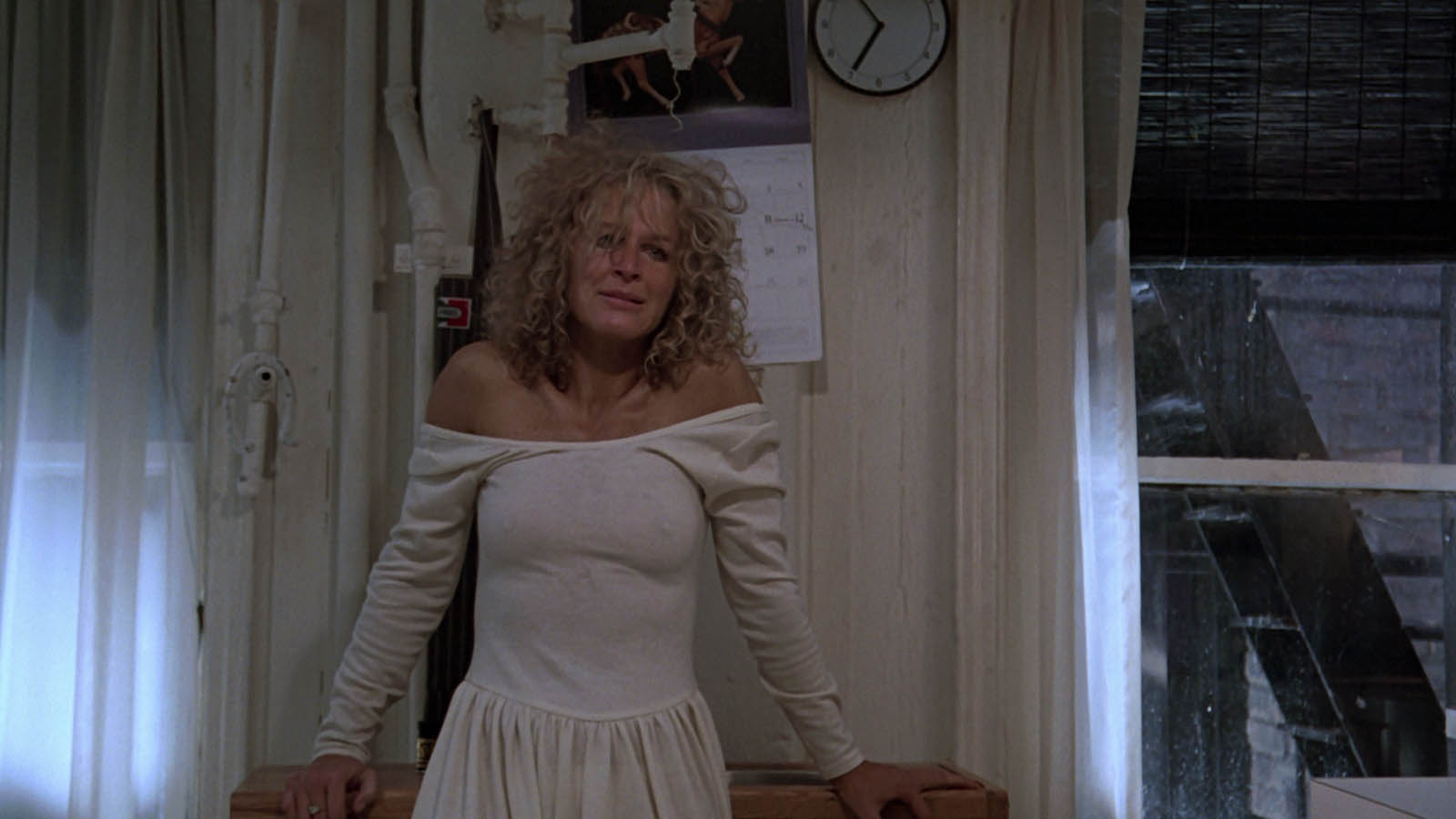
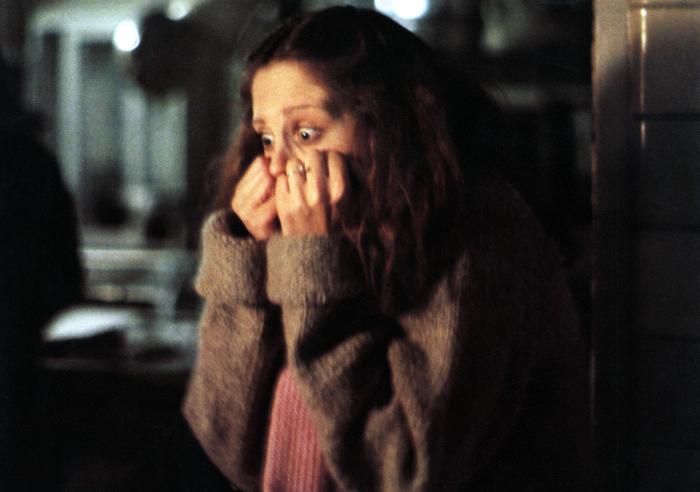
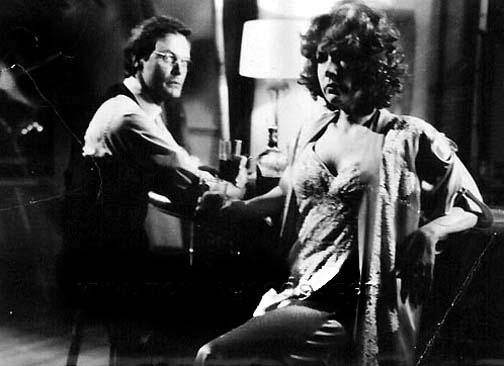
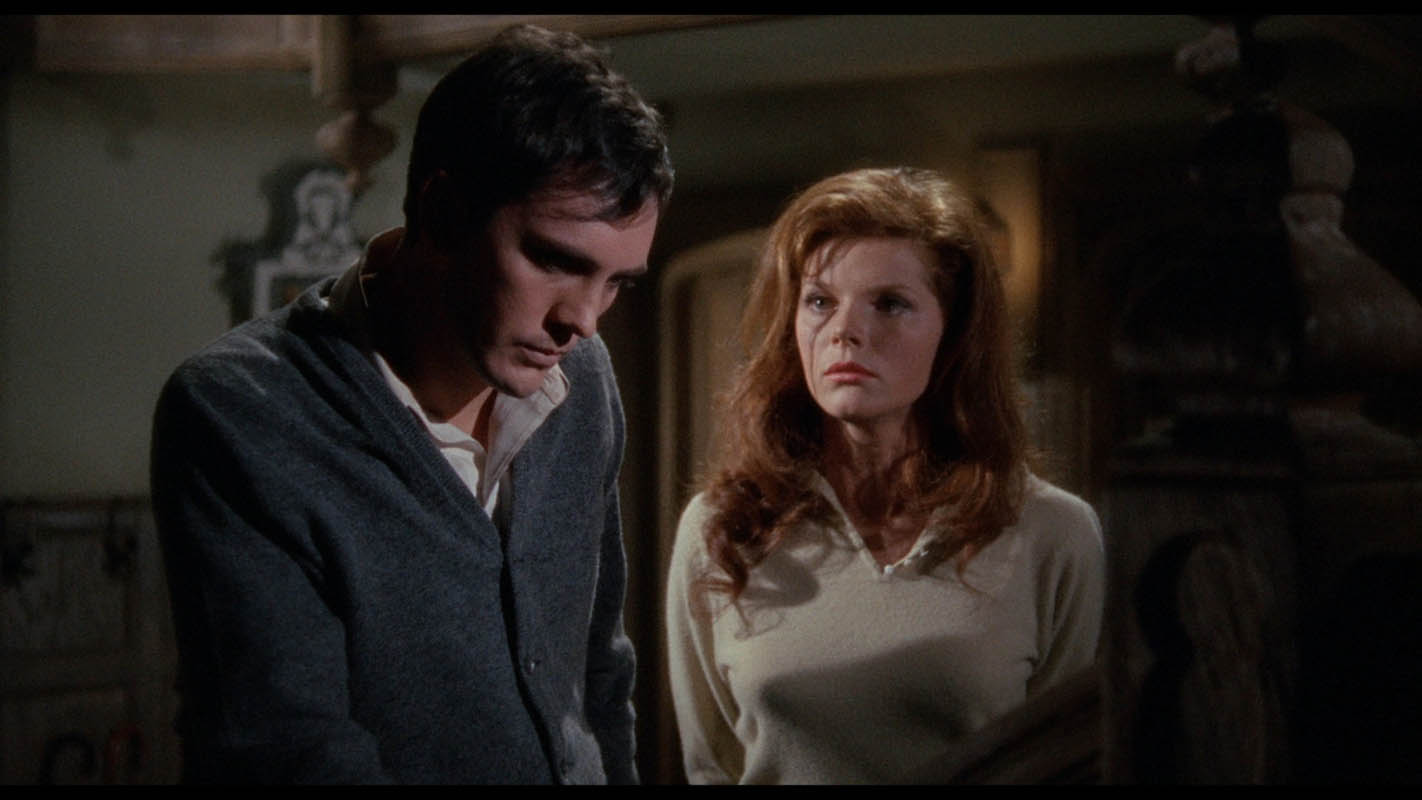
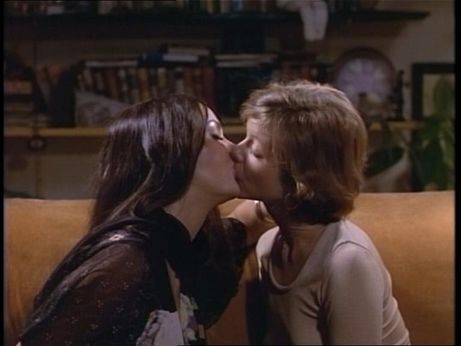
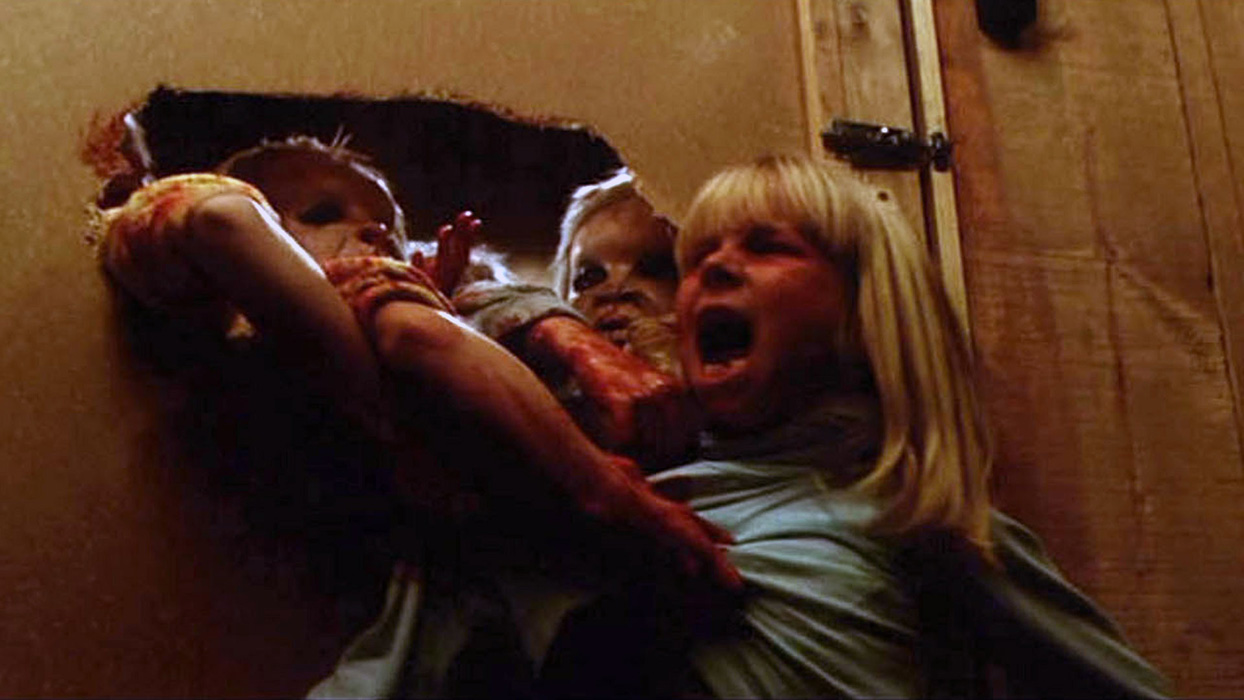
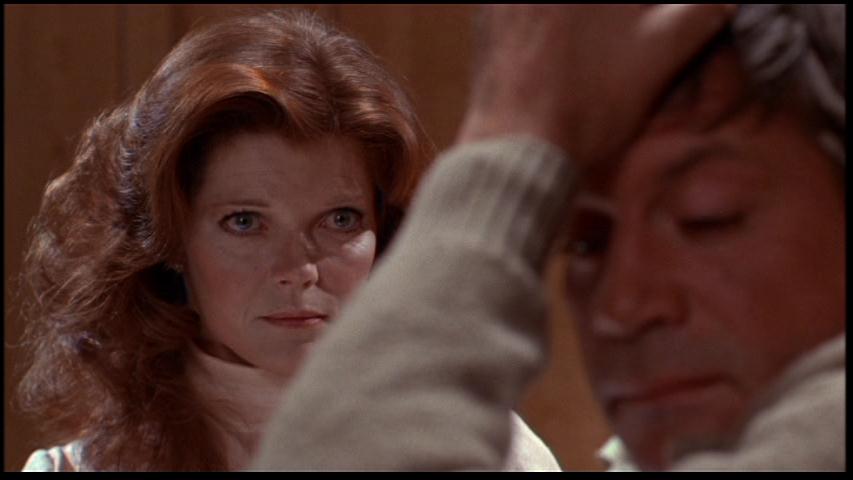
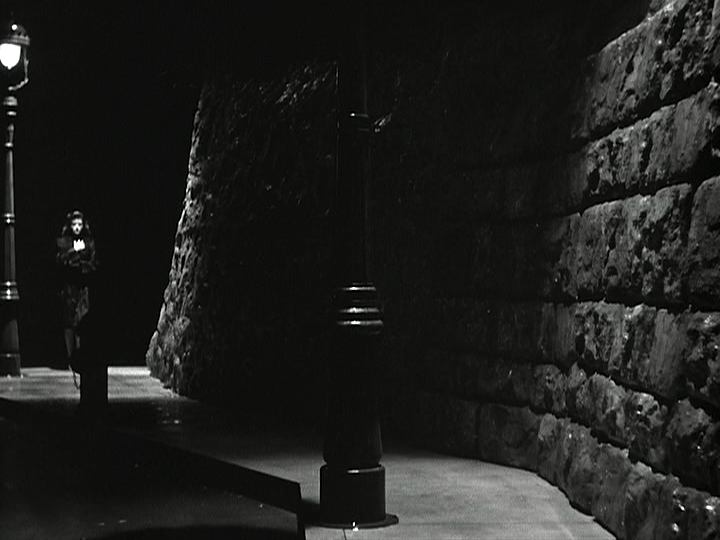
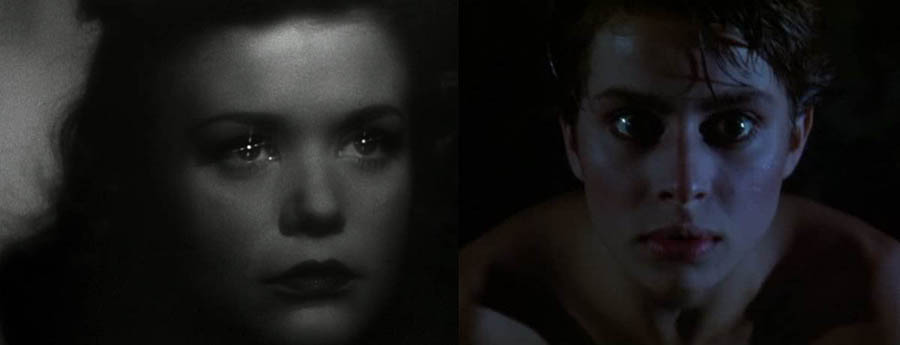
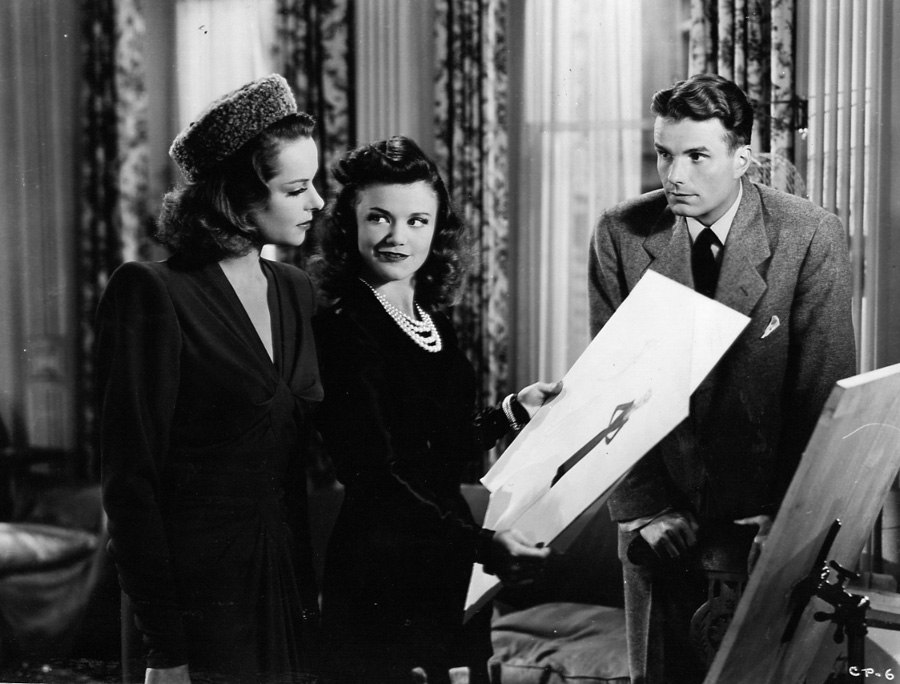
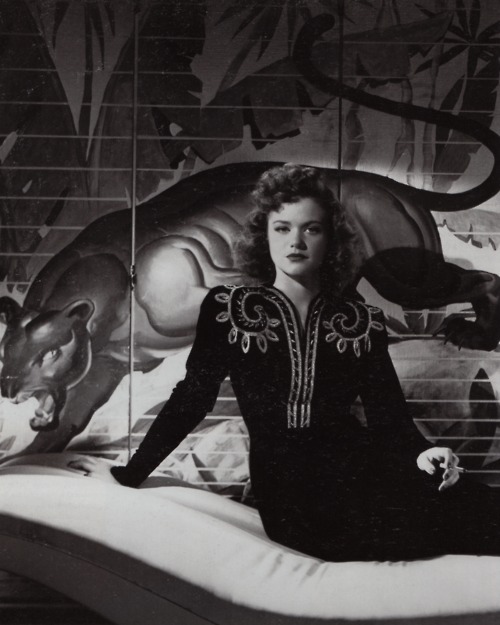


Never less than insighful! Great work!
simone simon… i’ve loved her since i first saw “the devil and daniel webster”. she makes a great au pair cum homewrecker in the service of the walter huston’s devil. rawr!
She really was something else. And died at a ripe old age.